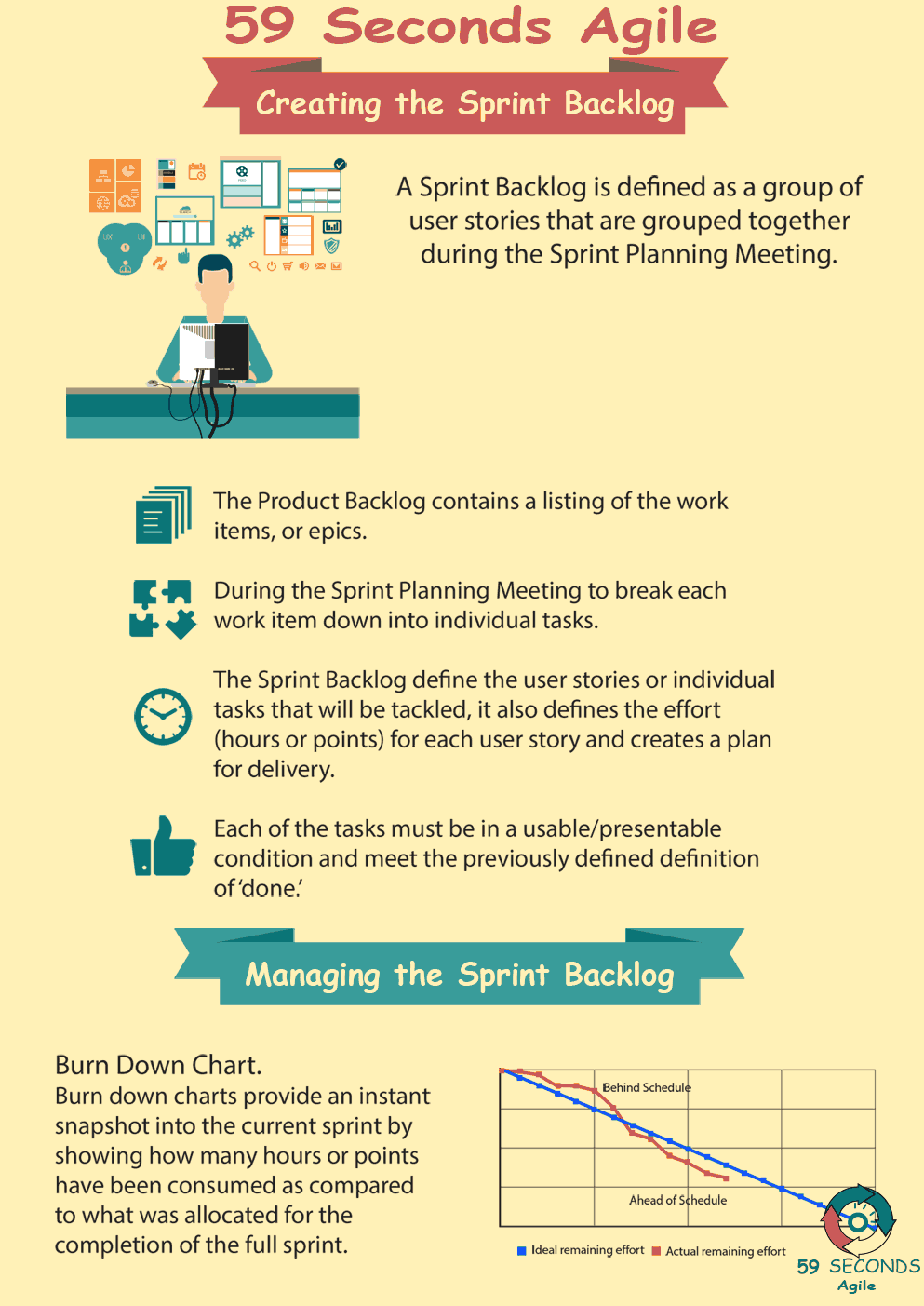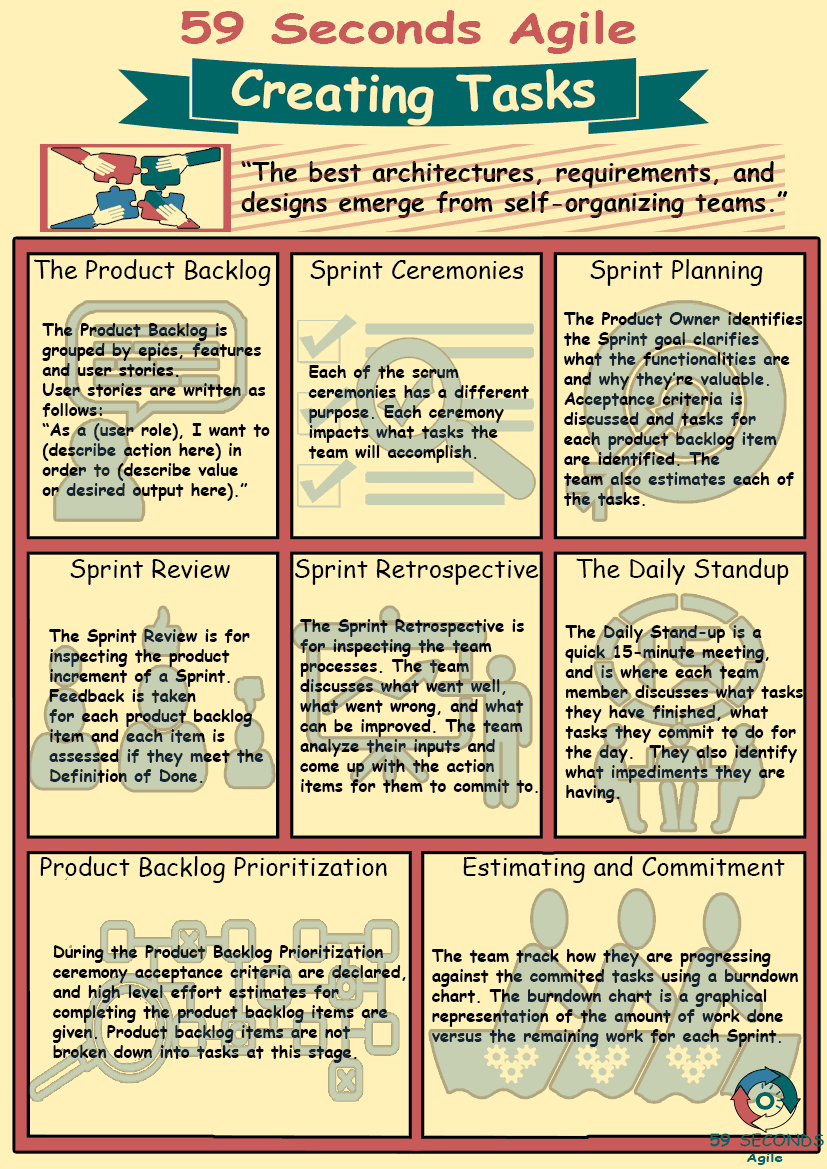This article looks to discuss ‘Creating the Sprint Backlog’. It provides an introduction to Sprint Backlog and covers Sprint Review and the Sprint Backlog Processes.
Creating the Sprint Backlog
A 59 Seconds Agile Training Video
Creating the Sprint Backlog for Scrum Masters – Part 2
A 59 Seconds Agile Article
Creating the Sprint Backlog: The Sprint Review
Once all of the items within the sprint backlog have been completed, it will be time for a Sprint Review. The Sprint Review is when the development team presents the completed tasks, through a demonstration, to the stakeholders.


The Sprint Backlog cannot be deemed completed and all tasks officially ‘done’ until each task has been approved by the Product Owner. Any items deemed as incomplete or ‘not done’ will be reviewed by the Product Owner who will then either return them to the developer for completion during the same sprint, or they will reformat the requirements of the task and include it in the next sprint.
Our Favourite Agile Books
We found these books great for finding out more information on Agile Scrum:
Creating the Sprint Backlog: Scrum Master and the Backlog Process
From defining the sprint to managing the entire backlog process, the Scrum Master oversees all aspects of a sprint. With tools such as Trello at his/her disposal, the Scrum Master is able to see a visual depiction of the health of the sprint, ensuring that they are able to identify problems and remove obstacles often before they become an issue.
Prev <— Continue Reading —> Next
The Agile User Stories and Tasks
A 59 Seconds Agile Video Animation
Prev <— Continue Reading —> Next
User Stories Applied
A 59 Seconds Agile Book Review
User Stories Applied by Mike Cohn is one of our favourite books on Agile User Stories. The book starts with an overview into user stories, and details what a user story is and the different aspects of them. He then discusses how to go about writing a user story, and provides details of the INVEST criteria that can be used to determine if the story is meeting all of its objectives. Next Mike gives an in depth discussion of who user stories are written for and where to begin when gathering the details for them. The book then discusses acceptance testing user stories, including how to go about specifying these criteria and the responsibilities of the development team and customers during this process.
Prev <— Continue Reading —> Next
The Agile Frameworks
A 59 Seconds Agile Infographic


